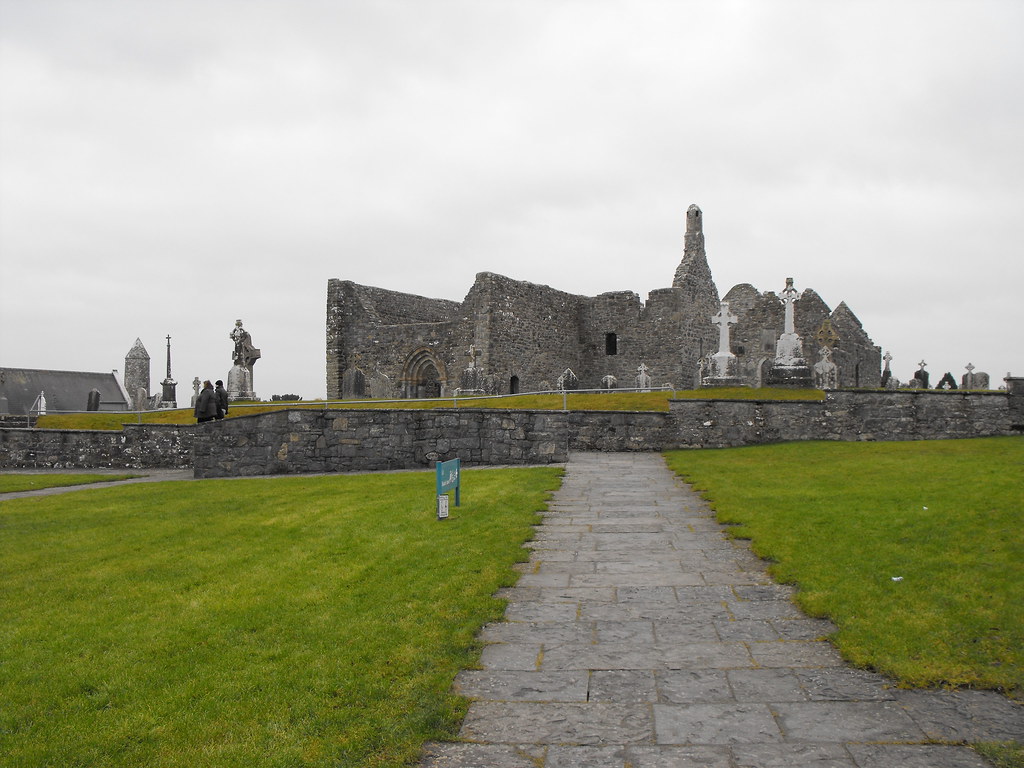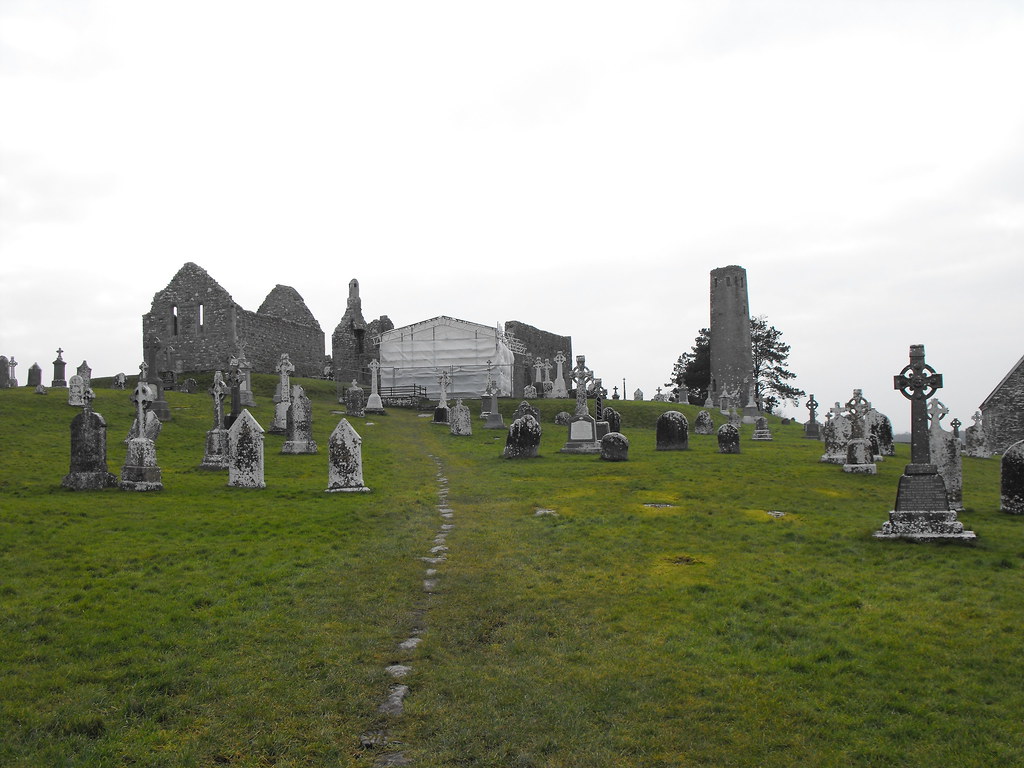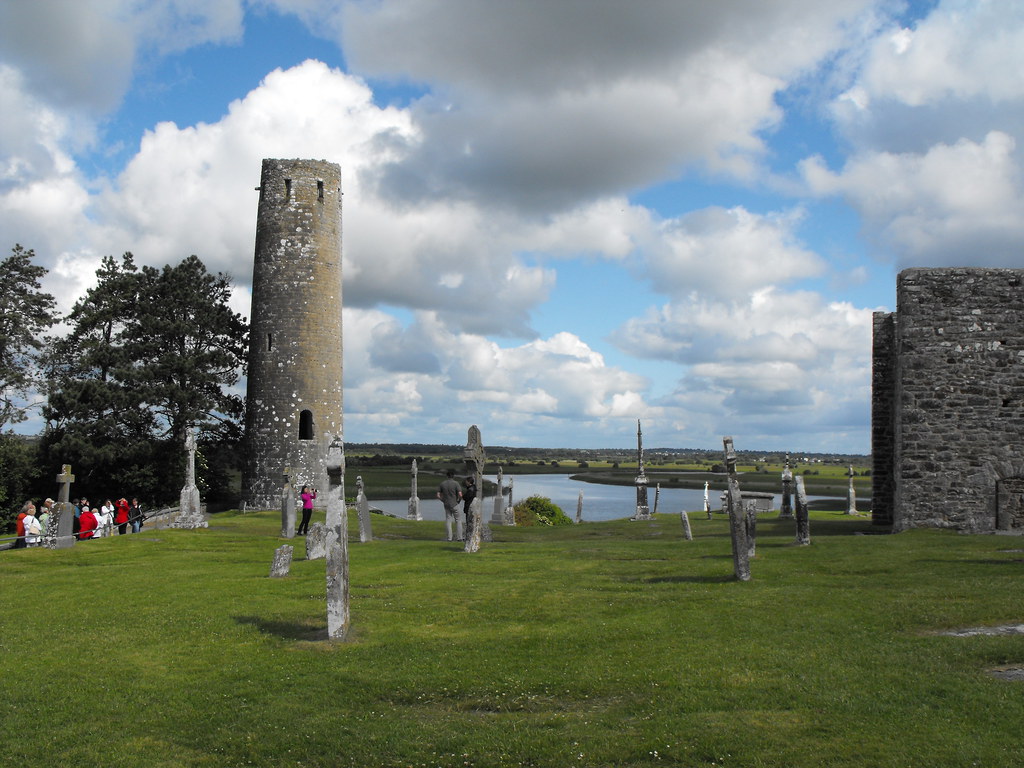Location – About 4m NE of Shannonbridge, there is plenty of parking and entrance fees are fairly reasonable. There is also a cafe and toilet facilities.
OS: N 009 308 (map 47)
Longitude: 7° 59' 11.37" W
Latitude: 53° 19' 38.88" N
I will give more accurate GPS readings for each site on their individual pages.
See map at the bottom of the page.
Longitude: 7° 59' 11.37" W
Latitude: 53° 19' 38.88" N
I will give more accurate GPS readings for each site on their individual pages.
See map at the bottom of the page.
Description and History – Clonmacnoise is one of Ireland’s ecclesiastical gems and must see for anyone with the slightest interest in Ireland’s Christian history. There is so much to see here that I could not possibly fit it onto one page so the individual sites with the complex have been dealt with individually. At the bottom of this page is a list of the sites covered, click on the name to access the individual pages. At present I am lacking pictures of both Temple Ciaran, the remains of Temple Kelly and parts of Temple Finghin as these were both covered with plastic when I was there for restoration purposes. They are now both open again and I will be returning to get more pictures of these sites. There are some smaller features such as bullaun stones of which I am missing pictures. I will try to get to these as well.
It makes sense to give a general history of the site here and history pertaining to the individual sites will be given in their own pages.
The site was founded by St Ciaran in 548AD who was the son of a master craftsman. The name Clonmacnoise (Cluain Mhic Nois) means the meadow of the sons of Nos. The area has a strategic importance on the banks of the River Shannon, which as this point in history and into the later medieval period, was a busy place as the river was important for trade. The site is also located on a major esker ridge-way which was used by people to traverse the boggy landscape. Clonmacnoise, therefore, grew in importance. From the time of St Ciaran’s death onwards the site has attracted many pilgrims. The present remains date from the 10th to the 17th century and there are many earlier cross-slabs and crosses also. The early foundation enjoyed the patronage of the kings of Connacht but it came under the influence of the kings of the Meath in the 11th century before reverting to the kings of Connacht in the 12th century. In 1111 Clonmacnoise was made the cathedral church of West Meath following the Synod of Rathbreasail. Following two centuries of attack at the hands of Irish enemies, the Normans and Vikings the foundation fell into decline from the 13th century onwards and never regained its former importance. A secular college was founded her in 1459 also. English forces ruined all the remaining churches in 1552.
The list is not in any particular order although churches and towers are treated first, followed by the crosses and other features.Click below for individual sites.
1. Temple Dowling and Temple Hurpan
2. Temple Melaghlin
3. Temple Ciaran
4. The Cathedral
5. Temple Finghin and Round Tower
6. Temple Connor
7. Temple Kelly.
8. The Nun’s Church
9. The Round Tower
10. The Cross of the Scriptures
11. The North Cross
12. The South Cross
13. The Cross-Slabs
14. The Pilgrim’s Way
15. The Wayside Cairn
16. Bullaun Stone
Difficulty – Easy to get to with plenty of facilities.
For more ecclesiastical sites, click here.
For more sites in Co. Offaly, click here.






